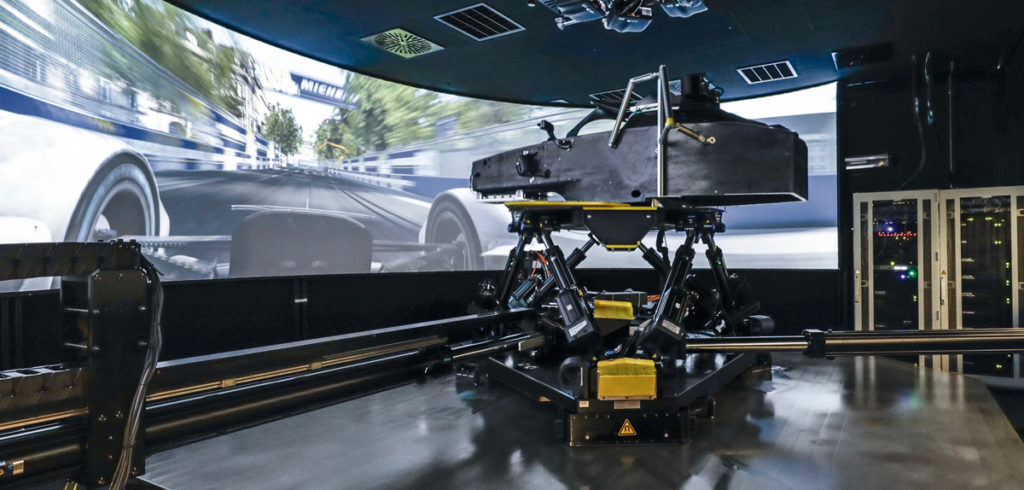The simulator aiding energy management strategy at Porsche Formula E is one of the most up-to-date in the world. Sitting in a large windowless room, the 3m-high structure rests on a 19-ton steel plate.
And while the monocoque looks like a soapbox, it in fact has all the elements of the new Porsche 99X Electric that are decisive for the simulator test. Equipped with a genuine 99X Electric steering wheel, each button has exactly the same functions as in the actual sports car.
The screen in front of the driver provides a 180° panorama of the racetrack, and engineers sit in front of their computers, observing each simulated drive through safety glass.
And while the system enables the driver to sense even the slightest bump in the cockpit, the g-forces during acceleration, braking and corners can’t be felt. Similar to being at sea, optical perception and signals from the organ of equilibrium do not match. The brain has to abstract the information.
The profiles fed into the simulator are highly precise, based on scans that are accurate to the millimeter. In this way, the training sessions provide detailed track knowledge while enabling basic setup for individual race cars and routes.
The most important Formula E preparation task, however, is to test various software programs for efficient energy management. As much electrical energy as possible must be available at every second. In qualifying mode, the Porsche drivers have a maximum of 250kW at their disposal; on a single fast lap, economizing has little effect on the range.
The standard battery, which is fully charged at the start, has a capacity of 52kW. During the race, it’s continuously recharged through regenerative braking. This energy recovery takes place automatically via the electric motor on the rear axle.
A brake-by-wire system regulates whether or to what extent the hydraulic brake engages and when the electric motor on the rear axle decelerates in order to convert kinetic energy into electrical energy.


